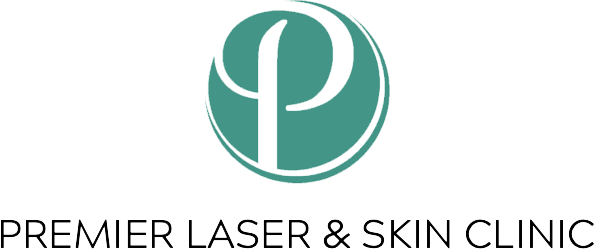Thank you for visiting our ultimate guide to pigmentation. We hope after you have finished reading it you will be better prepared to tackle your pigmentation. (8 min read)
This guide covers the following areas:
What is pigmentation?
What causes skin pigmentation?
Pigmentation and hyperpigmentation
Common pigmentation issues
-
Vitiligo
-
Albinism
-
Melasma
-
Sun damage sun spots (Solar Lentigenes)
-
Pigmentation and hyperpigmentation
-
Acne Scarring
-
Acne pigmentation
-
Freckles (Lentigenes / Ephelides)
What can I do about hyperpigmentation?
Treatments for hyperpigmentation
-
Pigmentation Lightening Creams
-
Face Acids
-
Retinoid
-
Microdermabrasion & Dermabrasion
-
Chemical Peels
-
Laser
-
IPL
What works best for your skin tone?
Dark circles
Effective treatments for dark circles
What is pigmentation?
According to the Mariam Webster dictionary pigmentation is :
“a colouring matter in animals and plants especially in a cell or tissue”
What causes skin pigmentation?
We can suffer from pigmentation issues whatever age, sex, skin tone and ethnicity we are.
Skin pigmentation can result in an over or under production of melanin. Melanin is produced by the meloncytes in the skin cells. When there is an over production of pigmentation it is called hyperpigmentation, when not enough is produced it is called hypopigmentation.
Skincare experts and Doctors are not sure of the exact reason for certain skin pigmentation changes. Other conditions like sun spots have obvious causes.
Pigmentation and hyperpigmentation
Pigmentation of the skin is a misleading phrase as all skin contains pigmentation. When it is unwanted or a problem it is best referred to as hyperpigmentation.
Hyperpigmentation causes dark patches or spots. They can be beige, brown, red or purplish coloured and can appear anywhere.
Common pigmentation issues
The sun is one of the biggest causes of pigmentation, along with pregnancy and hormonal changes. Below are the most common forms of pigmentation. Sometimes it can be severe and noticeable like vitiligo or albinism. Let’s look at these two extreme forms of pigmentation first.
What is Vitiligo?
Pop star Michael Jackson is said to have suffered from vitiligo which saw his skin colour change over the years from dark to light.
- Vitiligo happens when pigment-producing cells (melanocytes) die or stop producing melanin. Melanin is the pigment that gives your skin, hair and eyes their colour. It triggers your immune system to attack and destroy the melanocytes in the skin. Vitiligo is estimated to affect around 1% of the worlds population with it more noticeable on people with darker skin.
What is Albinism?
- Albinism is a rare inherited disorder caused by the absence of an enzyme that produces melanin. There is a complete lack of pigmentation in eyes hair and skin. Albinos have an abnormal gene stopping the body making melanin. There is no cure for albinism. It is vital people with albinism use sunscreen all the time because they have a higher chance of skin damage and skin cancer. It can occur in any race but is most common among caucasian.
Other severe skin pigmentation issues can occur due to autoimmune conditions, hormonal changes and sometimes shock.
Pigmentation seen in clinics everyday is not a severe as the two conditions above. The following types of pigmentation are more common, starting with one of the most common Melasma.
What is Melasma?
Pigmentation caused by pregnancy is called Melasma. (It is also known as ‘chloasma’ or ‘pregnancy mask’). The name comes from melas which is the Greek word for black. It results in brown or greyish patches of pigmentation developing usually on the face.
It is more common in women with up to 50% affected during pregnancy, in people of colour and those who tan easily.
Hyperpigmentation From Sun Damage Sun Spots (Solar Lentigenes)
When on the face it is normally found on the most exposed areas of the cheeks, nose and forehead. They can look like freckles or age spots or just as uneven patches of colour. Sun spots or age spots are commonly found in people over 50 but they can also appear in younger people who have spent many unprotected hours in the sun.
Hyperpigmentation from Acne Scarring
Scarring from acne can also cause hyperpigmentation. It is often red and can be very noticeable and difficult to cover up as the skins surface is damaged and uneven.
Acne pigmentation
This is caused by the extra melanin which can form around damaged skin. It is often referred to as hyperpigmentation and can be removed with careful skin care and laser treatment. Lasers destroy the discoloration and is suitable for all skin types
The darker pigmentation left behind by acne can be as bad as the acne and is more permanent. If an acne breakout gradually fades away red, brown or purplish discolouration, where the spots once were, can permanently be left behind.
Freckles (Lentigenes / Ephelides)
Lentigo is one freckle and lentigene are many. Freckles are a type of hyperpigmentation. The medical term for them is ephelides. They happen because more melanin is produced unevenly across the skin. This causes little spots of discolouration known as a freckle.
Freckles are not caused by the sun. They’re genetic. They do, however, appear when the skin is exposed to the sun.
What can I do about hyperpigmentation?
The best protection against it to use sun protection daily. When it is caused by medication or by certain illnesses it is best to speak to your doctor.
Before seeking treatment have the area checked by a skincare expert, doctor or dermatologist. Any skin changes should also be checked by a medical professional.
Once you are given the go ahead for treatment and have been advised there is nothing dangerous about your pigmentation, or any recent changes, you can take the next step to have them treated. But what treatments are available?
Treatments for hyperpigmentation
There are many miracle cures, over the counter lotions and creams all claiming to work wonders for skin pigmentation. The internet is full of them. And they are usually quite expensive. Only a few of these treatments will have an effect for most people.
That is why it is important to speak to a professional so they can point you in the right direction. Trying to navigate through all the claims and promises can leave your skin worse off and out of pocket for hundreds of pounds.
Some of the best proven treatments for pigmentation are listed below.
Pigmentation/ Lightening Creams
Over-the-counter (OTC) treatments use specific ingredients to reduce pigmentation in either gel or cream form. Many have stronger varieties available via prescription. Applied once or twice a day, over time they help lighten the skin over time.
- Common ingredients in OTC products include:
- hydroquinone
- liquorice extract
- vitamin B-3 (niacinamide)
- N-acetylglucosamine
- WHO IS THIS FOR?
Creams or gels are most effective on flat spots like age spots or melasma. They are also good for patches of discoloration across most skin types.
OTC products are easily available and a more affordable option for hyperpigmentation. They can take longer to work than professional treatments.
If you are buying online only purchase products from websites and manufacturers you trust.
Face Acids
Face or skin acids exfoliate or shed the top layer of your skin. The new skin cells replace older ones evening out your skin tone making it smoother.
Face acids are available OTC at beauty clinics and chemists. Always look for an acid content of 10% or less from a trusted source. A higher percentage may increase risks of side effects and are best left to professionals in a clinic setting.
Popular acids include:
- vitamin C (in the form of l-ascorbic acid)
- alpha hydroxy acids, such as glycolic, lactic, citric, malic, or tartaric acid
- kojic acid
- azelaic acid
- salicylic acid
- WHO IS THIS FOR?
Face acids are ideal for mild hyperpigmentation on lighter skin tones.
Retinoids
Retinoids are some of the oldest skincare ingredients used in the beauty industry. Derived from vitamin A, their small molecular structure lets them deeply penetrate into the skin layers below the epidermis.
Retinoids can be either prescription or OTC, with OTC being weaker. If after a few months you don’t notice results ask your skincare provider about retinoid tretinoin (Retin-A).
- WHO IS THIS FOR?
OTC retinoids may be safe for all skin tones. If you have darker skin, check with your skin care provider if you plan on using them long term.
Also retinoids may not be the first line of defence as they are more often used to treat wrinkles than hyperpigmentation.
Microdermabrasion & Dermabrasion
Dermabrasion goes much deeper into the layers of the skin then microdermabrasion and is more invasive with a longer healing time required. The results are more effective as a result of the invasive nature.
For microdermabrasion a diamond head is used along with a unique nourishing serum. Tiny crystals are “blasted” over the skins surface in a controlled way.
Old and damaged skin is smoothed away with clear, fresh skin left behind. As the upper skin layer is removed collagen production is encouraged. A course of treatments is ideal to target scars or pigmentation.
Practitioners can use various methods to lessen the pain to a tingling or scraping sensation so you should not worry about it being painful.
The treatment must only be carried out by professionals. Too much or over vigorous treatment can damage the skin and actually cause new pigmentation to form. If applied correctly microdermabrasion is very effective. It can be used on a wide range of pigmentation issues including acne scarring.
- WHO IS THIS FOR?
Microdermabrasion works best on superficial scars and for people with lighter skin. Your skincare provider will help you decide whether it is the right treatment for you.
Dermabrasion works on more serious pigmentation and is far more riskier, requiring a longer healing process of 10-14 days. There is also a risk of infection as layers of skin are scrapped away.
Chemical Peels for Pigmentation
A chemical preparation is used to take off upper layers of skin. The most popular chemical is glycolic acid mixed with other skin nurturing ingredients.
The preparation is applied by brush and left like a normal facial peel. When it is removed the skin sheds. This happens over the course of a few days. Applying sun block after a chemical peel is critical. If not more pigmentation may occur as the new fresh skin is very vulnerable and delicate.
Two popular peels many clinics offer are the Cosmelan Depigmentation Peel and the Dermaquest Skinbrite Peel.
-
Cosmelan:
Cosmelan is a skin whitening treatment which is effective for reducing dark spots and patches. It is a one-off peel that is suitable for anyone suffering from deep pigmentation or melasma. It blocks the melanin production in problem cells so gets to the root of the problem.
After the peel you will need an extensive home care kit to help improve your results in the weeks and months following the treatment.
-
DermaQuest SkinBrite Peel:
This is a more gentle pigmentation peel. It is ideal for targeting sun spots, age spots and freckles. It works by exfoliating the skin encouraging the damaged skin.
-
Pigmentation Facial Or Skin Lightening Peel
Skin lightening peels are also fantastic treatment for rejuvenating the skin where age spots or darker pigmentation is visible. Over a course of treatments, a special Alpha Hydroxy treatment is applied under clinical conditions. This removes a layer of skin revealing fresh, undamaged skin beneath. The treatment is not painful and the results are superb.
- WHO IS THIS FOR?
Chemical peels are best suited to treat age spots, sun damage, melasma and blotchy skin. They also work best on lighter skin tones and may provide quicker results than face acid products.
Laser Pigmentation Removal:
Non invasive and pain free, laser treatment is very effective against many forms of pigmentation. It is becoming increasingly popular because of the fantastic results and technology used.
Todays lasers are more advanced and sophisticated then earlier models and are now very successful on a range of skin types too.The laser beam targets the unwanted pigmentation in the skin cells. It destroys the pigmentation without affecting the surrounding tissues.
The pigmentation is then removed from the body naturally over time through its immune system. Laser pigmentation removal is not painful or uncomfortable. After 2-6 sessions most will notice improvements in skin.
- WHO IS THIS FOR?
Laser treatment work well on Freckles, Sun Spots, Hyperpigmentation, Age spots (solar lentigines), Flat pigmented birthmarks (congenital melanocytic naevi) and is suitable on all skin types.
IPL For Pigmentation Removal:
IPL is a type of non-ablative (fractional) laser treatment. Non ablative means it heats up the skin and is gentler then ablative procedures which destroy the layers of skin and require a longer healing period.
Intense Pulsed Light treatment (IPL) is great for lighter skin tones. It is different then laser treatment as it uses multiple wavelengths to target larger areas. Unlike laser which focus a targeted laser on an exact spot at an exact wavelength.
Collagen production and growth is stimulated within the dermis. It normally requires multiple sessions.
IPL is used for overall pigmentation issues, but flat spots especially respond to this treatment. It may also help reduce the appearance of wrinkles, spider veins, and enlarged pores.
- WHO IS THIS FOR?
IPL works best for people with fair skin.
What works best for your skin tone?
Skin tone affects the intensity and length of treatments. People with all skin tones can use the treatments mentioned above but if you have a darker skin tone you may need more time for treatments to work.
- Lighter skin tones respond well to most hyperpigmentation treatments
The following may be ruled out if you easily tan or have darker skin:
high-beam lasers
IPL therapy
- Medium skin tones should consider
chemical peels
microdermabrasion
- Darker skin should consider:
glycolic or kojic acid
microdermabrasion
lower-strength chemical peels
laser treatments – only used at lower intensities over a larger number of sessions
Dark Circles Under The Eye Dark (Preorbital Dark Circles)
Dark circles under the eyes or preorbital dark circles occur when the skin below the eyes shows blood vessels and pools. They appear blue in people with fair skin as skin only lets in the blue wavelength of light.
If they appear darker it is because under eye circles reflect light from blood under the thin skin. The contrast is greater and more apparent the lighter your skin. Skin under your eyes is only 0.5mm thick which compares to 2mm thick on rest of your body.
Causes range from:
- Seasonal allergies, sleeping too much or too little, eczema, stress, or even crying. In these cases dark circles might disappear by themselves.
- Excessive exposure to the sun or even skin pigmentation abnormalities.
- Ageing could also be guilty as you lose the fat and collagen around your eyes, and that magnifies what may not have seemed like a dark circle just a few years ago.
- Genes and ethnicity also play their part.
Effective Treatments for Dark Circles
Dark under eye circles can be treated by a number of ways.
Combines microneedling and radiofrequency. It stimulates collagen production and helps to plump and firm the skin. The skin under the eyes becomes fuller unable to reflect blue light as much and reducing the dark appearance.
Puffiness or “bags” often come with dark circles. Dermal fillers can help restore brighter, more youthful eyes. Injectables are not for everyone and can be seen as a step to far but they do work well and are an option.
-
Sublative Radio Frequency Skin Resurfacing:
This works by penetrating beneath the skins surface to start cell regrowth. Heat targets the connective tissue which makes it pull together and lift. It reaches deep into the layers stimulating cell regrowth and eliminating dark circles.
Designed for ages 30 – 50, it can either be used to preventative or restore. Results develop over eight weeks and it is considered to be highly effective, safe as well as FDA approved.
With so many effective and affordable treatments on offer, you don’t need to suffer with skin pigmentation any longer. The first step you can take today is to apply good quality high SPF sun cream to your skin. The next step should be to contact a qualified skin care practitioner to examine and discuss your skin and draw up a treatment plan for you.
Why not book a free consultation with one of our skincare specialists today. It’s free, the only cost is your time.


























